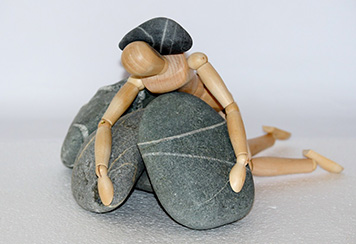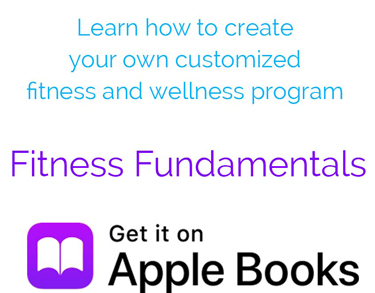The 8 Patterns of Fitness
In this series, I’m going to share some thoughts about the eight patterns of Integre8t Fitness. With these fundamentals in place, you can expect to see enhanced results from your mobile personal training plan. These concepts apply to all fitness and wellness programs. They are the patterns of your lifestyle. Within eight weeks, you can begin to make infinite progress.
#8Patterns1Lifestyle
#8WeeksInfiniteProgress
Types of strength
The fourth pattern is strength. Most people think of strength only as the ability to exert against heavy external forces. The obvious examples are lifting heavy weights, pulling on cables, or pushing and pulling against the action on a machine. But strength is not only the ability to move against forces. It’s also an important factor in control, stabilization, and power.
Control
The ability to control one’s own weight allows us to perform the movements we need in our daily lives. An example is picking up something you dropped. Think about kneeling down, lifting properly while standing up again, and then walking away. All this requires a complex coordination of motion. Without control none of this would be possible.
Resistance training with weights can help you move heavier loads; however, to avoid becoming muscle bound, it’s helpful to include calisthenics. These are strength and endurance exercises performed with the body’s own weight as the source of resistance. Calisthenics strengthens muscles and connective tissues. It has a tendency to also maintain a fuller range of motion.
Stabilization
Stability is essential to performing nearly any activity. In order of declining value for stability we have integrated core activities, pulling on cables, moving free weights, and mushing around with machines.
Core
All stability comes from your developed ability to harness the power of your “core.” This is a term which became a hot-button word at the turn of the millennium. People often mistake the “core” for being the abdominal muscles on the front of the torso. However, the “core” is actually comprised of all the many muscles that cause, control, or stabilize movement through the spine and hips. Having beautiful abs does not necessarily indicate that you have a strong “core.”
All movement emanates from your center. To have a good foundation for strength, speed, and power (moving with strength very quickly or explosively), you must be able to perform dynamic, functional movements. Compound movements that involve moderate balance and coordination are good for developing a “good core.” But please don’t take this to extremes. You can dramatically increase your risk of injury. Performing barbell squats while standing on a medicine ball is ridiculously dangerous. Yes, I saw video of someone doing that on YouTube. Don’t be stupid about this.
Cables
Using cable machines forces you to control direction and range of movement under tension in all directions. These are best done standing, or in some other position as you engage your stabilizers. Sitting on a bench removes much of the effort when doing cable exercises. For example, instead of using heavier resistance for seated cable rows, lower the weight and perform the exercise in a squatting position on your feet. You will see an immediate increase in difficulty that is far better at engaging your entire body simultaneously. Cables are more effective than free weights for developing stability because you have to specifically control the minute changes in angles and directions.
Free Weights
Free weights, like cable machines, not only increase resistance training, they also require coordination and stabilization. Not as much as cables, but still much better than machines. Free weights are excellent for pure strength, but one often moves them in only one direction, which means they train your body part to move in only one direction. It is very important to train through a full range of motion in both directions, to avoid becoming muscle bound. Also, dumbbells require more stabilizing and coordination than barbells, so be sure to include them in your strength workouts for each body part.
Machines
Least helpful for stability are the machines, which generally should not be used by the average, healthy exercise enthusiast. They are designed for people who are injured, deconditioned or new to exercise. Most are generally fixed in one direction of movement, limited in range of motion, require that you sit or lay down (and thus greatly reduce the engagement of your stabilizers/”core”), and force you into awkward or dangerous positions. As soon as you recover or learn the basics, get off of the machines immediately. Advanced exercisers use them to focus on the nuances of particular muscles, but that is generally for people who are at the point of honing particular cuts for aesthetic purposes.
Single body part machines and Smith machines are not your friend. They remove practically all the work. Sitting or laying down means you don’t have to support or control your own weight. They do all the work of controlling your direction of movement, and they lock you into positions that are potentially dangerous. Be particularly careful with shoulder press machines, hamstring curl machines, and the machines for abduction and adduction of the legs.
Power Training
Finally we come to power. Power is the type of strength that is performed explosively. Clapping pushups or sudden jabs in boxing are familiar examples; however, there are millions of options. One extreme example might be this: 10,000 years ago your grandfather was walking along until attacked by a sabertooth tiger. Your grandfather’s ability to suddenly sprint and bare down to jump as high and as quickly as possible to reach the limb of a tree, and then to immediately pull himself up out of striking distance saves his life (and eventually leads to you reading this). The point that is most important to remember is that strength is a dynamic component of your wellness that extends far beyond picking things up and putting them back down.
4 Sessions per Month
Save $100- Free Evaluation
- $100 per session
- 1 session/week
8 Sessions per Month
Save $140- Free Evaluation
- $95 per session
- 2 sessions/week
12 Sessions per Month
Save $220- Free Evaluation
- $90 per session
- 3 sessions/week
Recent Updates

Glycemic Index vs Glycemic Load
This score indicates how damaging a food will be to your blood sugar levels. Foods that score 0-55 are rated low impact (and thus presumed to be better for diabetics and those looking to maintain healthy weight and/or body fat ratios), but this is not the whole picture.

Caffeine: 14 better options to ease SAD
Nearly a year ago to the dot, I wrote an article about Seasonal Affective Disorder (SAD), but there I focused on the importance of getting access to a full range spectrum of light. Here I’d like to focus on caffeine and sleep’s effect on SAD. I’ll also offer suggestions for what to do to help you feel better on the dark days.

Avoid fish oil supplements
I don’t generally promote supplements. Most of them play to specific, isolated points of medical research to serve as a magic pill. One remarkable example of this is fish oil.



